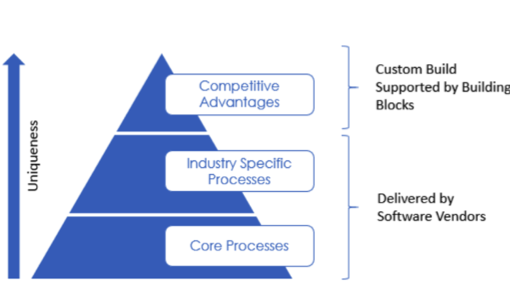How to check odata service? In the bustling digital landscape, data reigns supreme. And nowhere is this truer than in the realm of OData services – potent pipelines that streamline data access and exchange across diverse applications. But with great power comes great responsibility, and ensuring the smooth flow of data requires vigilant testing and verification. Fear not, intrepid data voyager, for this comprehensive guide equips you with the tools and techniques to navigate the intricate paths of OData service checks, emerging victorious from the data maze.

Understanding How to check odata service
Before embarking on our testing quest, let’s demystify the very fabric of OData services. Imagine them as neatly organized libraries, where data is meticulously categorized and readily accessible through standardized protocols. This structure revolves around:
- Entities: Represent real-world objects like “Customers” or “Products,” holding relevant data attributes.
- Properties: Define individual data points within entities, such as “CustomerID” or “ProductPrice.”
- Collections: Group related entities, like a “CustomerOrders” collection under a “Customer” entity.
- Metadata: Provides information about the service structure and functionalities, guiding interactions and ensuring compatibility.
Charting the Course: Exploring Testing Types and Tools
Now, armed with this understanding, let’s venture into the testing wilderness, where diverse approaches await:
- Metadata Validation: Verify the service structure aligns with expectations, ensuring entities, properties, and relationships are accurately defined. Tools like SAP Gateway Client or online validators come to your aid.
- Read Operations Testing: Check if data fetching works as intended. Employ tools like Postman or Fiddler to send GET requests and scrutinize the returned data format and completeness.
- Create, Update, and Delete Operations Testing: Put write functionalities to the test. Send appropriate POST, PUT, and DELETE requests, verifying successful data manipulation and potential error handling.
- Performance Testing: Simulate real-world workloads to gauge the service’s responsiveness and stability under pressure. Tools like JMeter or LoadRunner help uncover potential bottlenecks and ensure scalability.
- Security Testing: Assess the service’s vulnerability to unauthorized access and data breaches. Penetration testing tools and vulnerability scanners become your loyal companions in this endeavor.
Navigating the Challenges: Common Pitfalls and Solutions
No adventure is without its obstacles, and OData service testing is no exception. Be prepared to tackle these common foes:
- Inaccurate Metadata: Discrepancies between the declared service structure and reality can lead to integration issues. Double-check metadata and ensure alignment with actual data models.
- Unexpected Error Codes: Unfamiliar error messages can be cryptic roadblocks. Consult service documentation and leverage online resources to decipher their meaning and troubleshoot accordingly.
- Incomplete Data or Incorrect Formatting: Missing data or discrepancies in returned formats can hinder application functionality. Carefully analyze response payloads and verify adherence to defined data types and structures.
- Performance Bottlenecks: Sluggish response times or unstable behavior under load can damage user experience. Employ performance testing tools to identify bottlenecks and optimize the service’s efficiency.
Optimizing the Journey: Best Practices for Effective Testing
Remember, preparation is key to mastering the data maze. Follow these best practices for smooth and efficient OData service checks:
- Define Clear Testing Objectives: Outline what you want to achieve, focusing on specific functionalities or potential vulnerabilities.
- Utilize a Variety of Tools: Don’t rely on a single weapon. Leverage diverse testing tools to cover different aspects of the service’s behavior.
- Automate Repetitive Tasks: Free yourself from tedious manual testing by scripting automated test cases for routine operations.
- Document Your Findings: Keep a detailed record of your testing progress, including successes, failures, and identified issues for future reference and remediation.
- Collaborate with Stakeholders: Share your findings and recommendations with developers and system administrators to ensure swift issue resolution and service improvement.
Beyond the Horizon: Emerging Trends in OData Service Testing
The data landscape is constantly evolving, and so must our testing approaches. Keep your eyes peeled for these exciting trends:
- Artificial Intelligence-powered Testing: AI algorithms can analyze service behavior and automatically identify potential issues, paving the way for more comprehensive and efficient testing.
- API Security Automation: Continuous automated security scans and vulnerability assessments bolster protection against evolving cyber threats.
- Cloud-based Testing Platforms: Leverage the scalability and accessibility of cloud-based platforms for convenient and flexible service testing anywhere, anytime.
The Final Chapter: Your Path to how to check odata service Mastery
Remember, checking OData services is not a singular quest, but an ongoing journey of exploration and refinement. By understanding the service anatomy, employing diverse testing techniques, and adapting to emerging trends, you can navigate the data maze with confidence, ensuring the smooth flow of information and ultimately propelling your applications to new heights of data-driven success. So, arm yourself with knowledge, choose your testing tools wisely, and embark on your own OData service testing adventure. Remember, with diligence and perseverance, you can emerge from the maze, data maestro in hand, ready to shape the digital landscape with reliable and vibrant information flows.
In addition to the above, you can further personalize the blog post by:
- Adding real-world case studies: Showcase how specific companies or organizations have leveraged OData service testing to overcome challenges and achieve their goals.
- Including code examples: For technically inclined readers, provide snippet examples of test scripts or queries used for checking different aspects of an OData service.
- Offering advanced testing techniques: Delve deeper into specific methods like data fuzzing or security penetration testing for experienced testers seeking to further refine their skills.
- Highlighing industry best practices: Reference renowned standards or white papers from established organizations like IETF or OASIS to add credibility and authority to your recommendations.
By incorporating these elements and continuously honing your content, you can craft a truly informative and engaging blog post that empowers readers to navigate the intricacies of OData service testing and become data masters themselves.
Remember, the journey to data mastery is never-ending, so keep exploring, keep testing, and keep the data flowing!
You may be interested in:
Creating and Querying O DATA Services
SAP BTP: Service Consumption Model in Steampunk
Data’s True Potential: The Master Key Called OData Connector
OData in SAP ABAP: Streamlining Data Exchange and Integration




